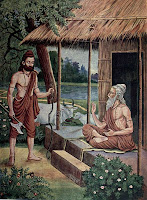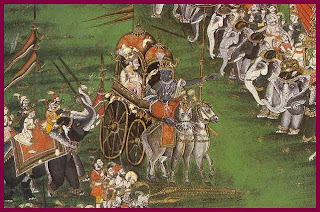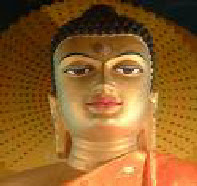Jamadagni

Image Source: Wikipedia An ancient rishi (sage), Jamadagni was the father of Parashurama (Rama with the axe), the sixth Avatar (“Descent”) or Incarnation of Vishnu. Once Jamadagni was robbed by the wicked King Kartavirya, the most famous of the Haihaya kings. As a result, Parashurama killed Kartavirya. Jamadagni was in turn killed by the sons of Kartavirya. This enraged Parashurama who exterminated all the males of the Kshatriya caste with the axe given to him by Shiva twenty-one times in succession. Some accounts say that Jamadagni was killed by Kartavirya himself. Jamadagni’s wife was Renuka who is known for her wifely fidelity.





